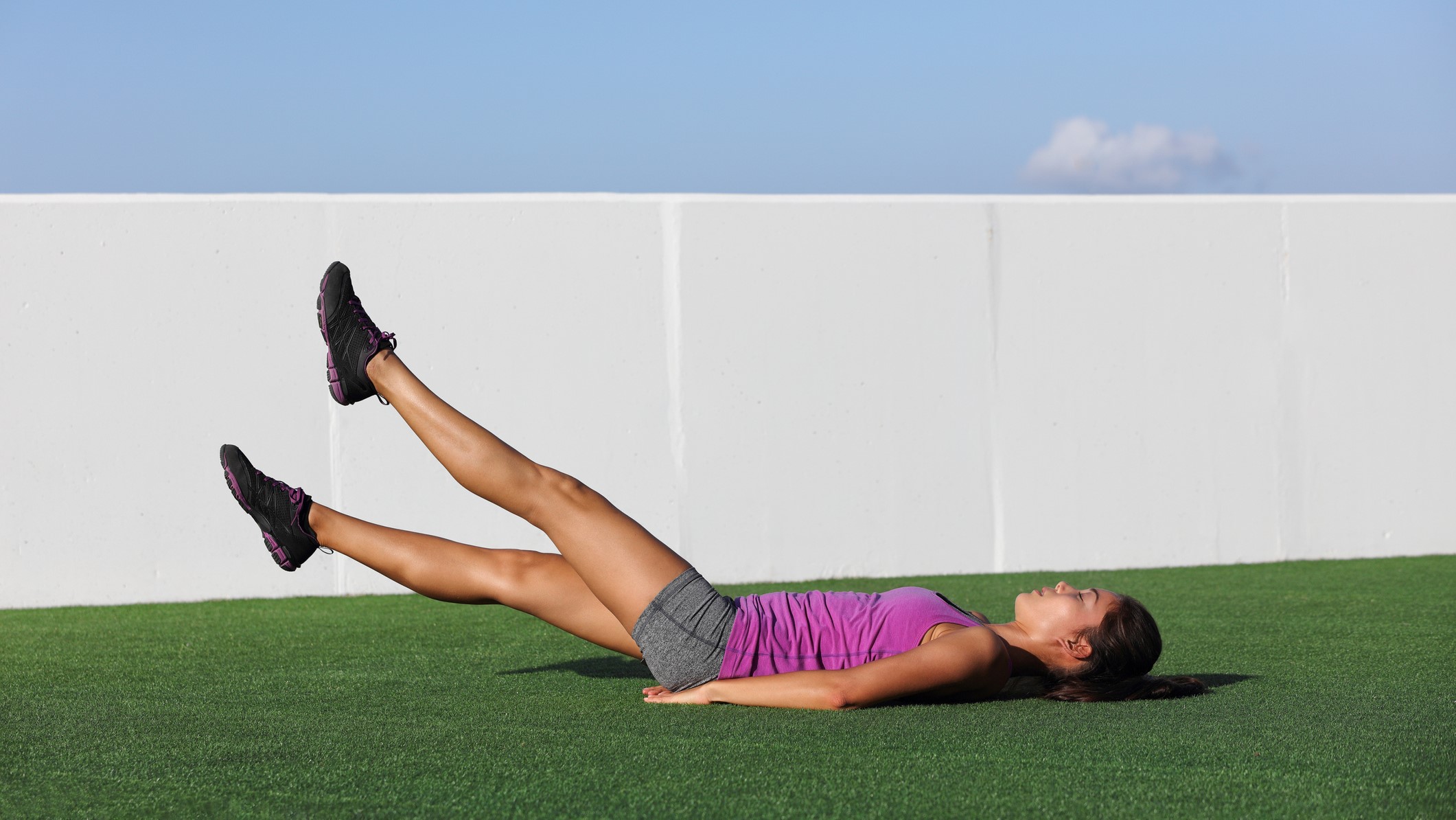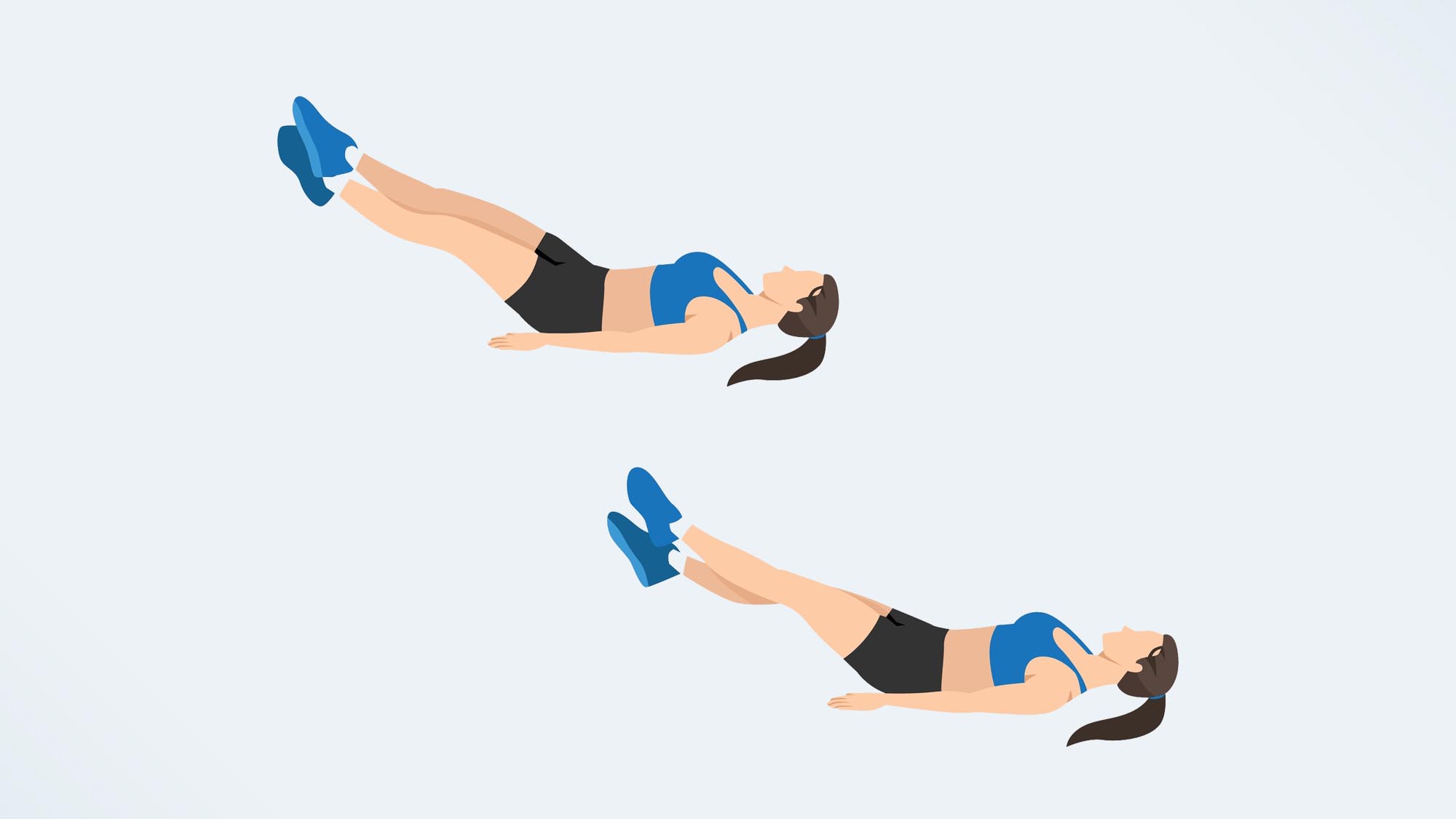
When it comes to working our abdominal muscles, many of us will stick to the basics, and opt for crunches, sit-ups, and planks to work our midsection. That said, not all ab exercises are created equal, and one that doesn’t get a lot of attention (but does a great job at working your core) is the humble scissor kick. As the name suggests, this exercise involves lying on your back and kicking your legs in a criss-cross motion, like a pair of scissors.
This ab exercise often gets confused with butterfly or flutter kicks, but it’s a completely different move. Read on to find out more about how to do scissor kicks, the benefits, and the different variations to add to your routine.
It’s worth noting that if you are pregnant, or you suffer from lower back pain, experts do not recommend this move. Lying on your back is not recommended in the first trimester according to the American College of Obstetricians and Gynecologists. If you’re new to the exercise, or you’re returning to exercise following an injury, it’s a good idea to check your form with a personal trainer.
How to do scissor kicks
Let's start by taking a look at how to do scissor kicks. For this exercise, you’ll need to lie flat on your back, so it might be worth unrolling one of the best yoga mats to offer some protection from the floor.

- Start by lying on your back, with your legs extended out in front of you.
- Place both hands under the small of your back, with your palms facing the floor. Alternatively, leave your arms by the side of your body, keeping your palms pressed into the floor.
- Engage your core and keep your lower back pressed into the mat as you raise both legs around 6-12 inches off the floor, or at around a 45-degree angle.
- From here raise kick your legs in a crisscross pattern horizontally, swapping which leg is slightly higher than the other.
- Keep your lower back pressed into the mat, and your core engaged throughout.
As mentioned above, the scissor kick is different from the flutter kick, as your legs are moving horizontally. With a flutter kick, you are kicking your legs up and down vertically. Both moves are challenging and will work the core hard, but scissor kicks are slightly more advanced, as the horizontal movement targets the adductor muscles.
Scissor kicks: Muscles worked
For a simple-looking move, scissor kicks work a lot of different muscles in the body. As well as targeting all of the muscles in your core, scissor kicks work your glutes, quads, adductors, and hip flexor muscles.
Far more than just being an aesthetic goal, a strong core can help you run faster, lift heavier weights, sit with a better posture, and protect your spine from injury. If you are hoping to build visible ab muscles, you’ll need to focus on your body fat percentage — here’s how to calculate your body fat percentage, and why it matters.
Scissor kicks: Form mistakes
Letting your back peel off the mat
Like all ab exercises, you want your lower back to stay pressed into the mat during this exercise. If you feel your back arching away from the mat, ensure you’re engaging your core — think about sucking your belly button into your spine. If you’re struggling, you can make the move easier by raising your legs higher than 45 degrees or raising onto your forearms. You’ll still work your core, but it will be easier to keep your back pressed into the mat. As you get stronger, you can lower your legs towards the floor — the lower your legs, the harder this move is.
Moving too quickly
Remember, the key here is to move slowly, and with control, not complete your reps as quickly as possible.
Scissor kicks: Variations to try
As mentioned above, to simplify the move you can raise your legs higher than 45 degrees, raise onto your forearms, and reduce your range of motion. If this is still too difficult, swap the move for a bicycle crunch that uses a lot of the same muscles as a scissor kick — here’s how to do a bicycle crunch.
To make the exercise more challenging, you can add a set of the best ankle weights to the move, lift your arms, head, and shoulders off the ground as you scissor kick, or increase the range of motion, by kicking your legs out wider.







